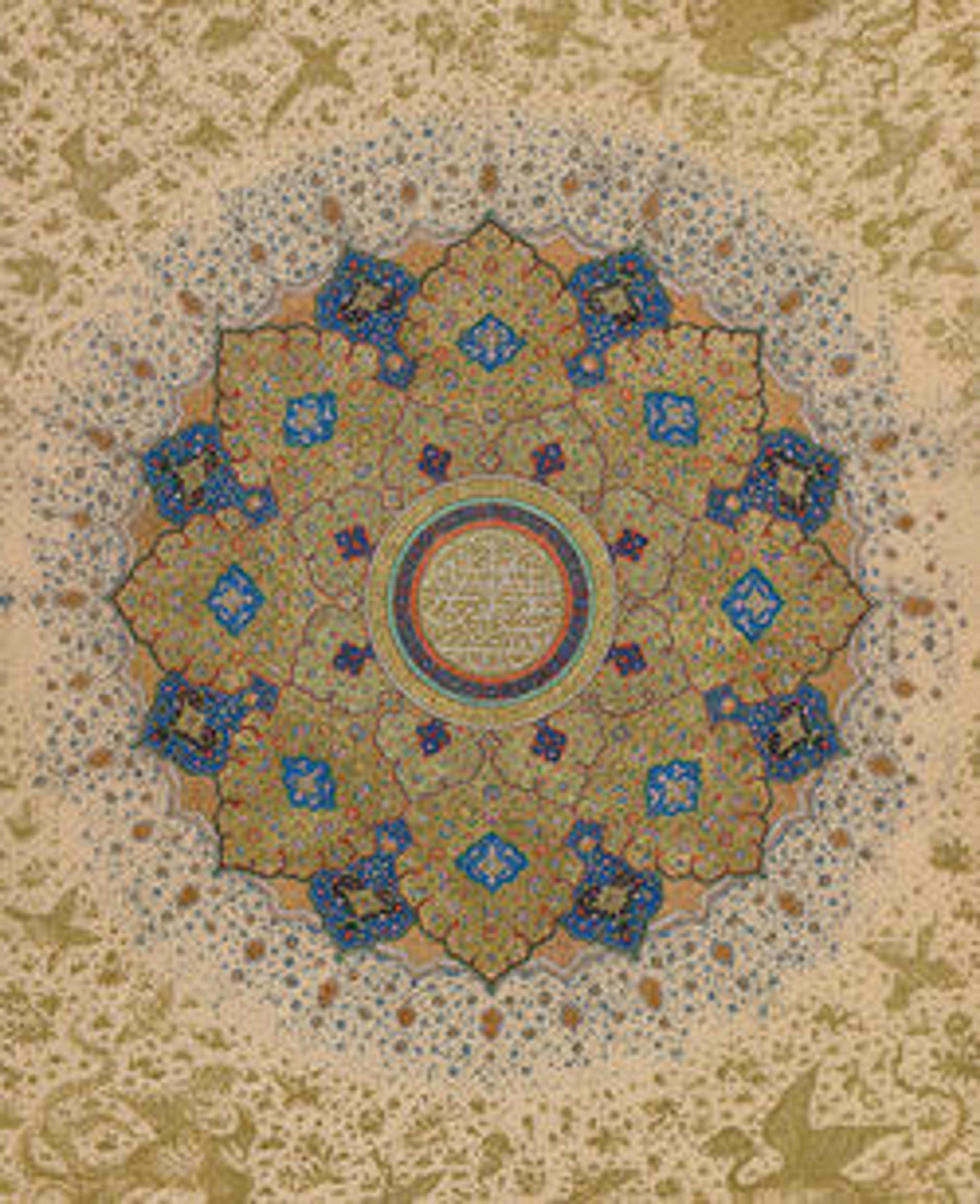Fan with Poetic Verses
Artwork Details
- Title:Fan with Poetic Verses
- Date:dated 1301 AH/1883–1884 CE
- Geography:Made in Iran, Tehran
- Medium:Wood; painted, gilded, and lacquered
- Dimensions:H. 9 1/4 in. (23.5 cm)
W. when open 18 1/2 in. (47 cm) - Classification:Lacquer
- Credit Line:The Moses Lazarus Collection, Gift of Josephine and Sarah Lazarus, in memory of their father, 1888–95
- Object Number:90.2.65
- Curatorial Department: Islamic Art
Audio
6776. Fan with Poetic Verses by Hafiz
Reading
SHEILA CANBY: The 14th century poet known as ‘Hafiz’ is one of the most popular of the classical Persian poets. His poetry appears in books, and inscribed all manner of objects. Listen to a poem by him. It’s read for us by the Persian reciter Iraj Anvar. He’ll read translation of the poem’s first verse, and then the Persian in its entirety. Persian classical poems don’t have titles per se, but this piece is known after the word “Remember” which is its refrain.
IRAJ ANVAR: (translated from Persian) Remember the day of union with the friends / Remember those times / Remember / From bitter sorrow my mouth became like poison / Remember the revelers’ cry of drink.
More Artwork
Research Resources
The Met provides unparalleled resources for research and welcomes an international community of students and scholars. The Met's Open Access API is where creators and researchers can connect to the The Met collection. Open Access data and public domain images are available for unrestricted commercial and noncommercial use without permission or fee.
To request images under copyright and other restrictions, please use this Image Request form.
Feedback
We continue to research and examine historical and cultural context for objects in The Met collection. If you have comments or questions about this object record, please contact us using the form below. The Museum looks forward to receiving your comments.
